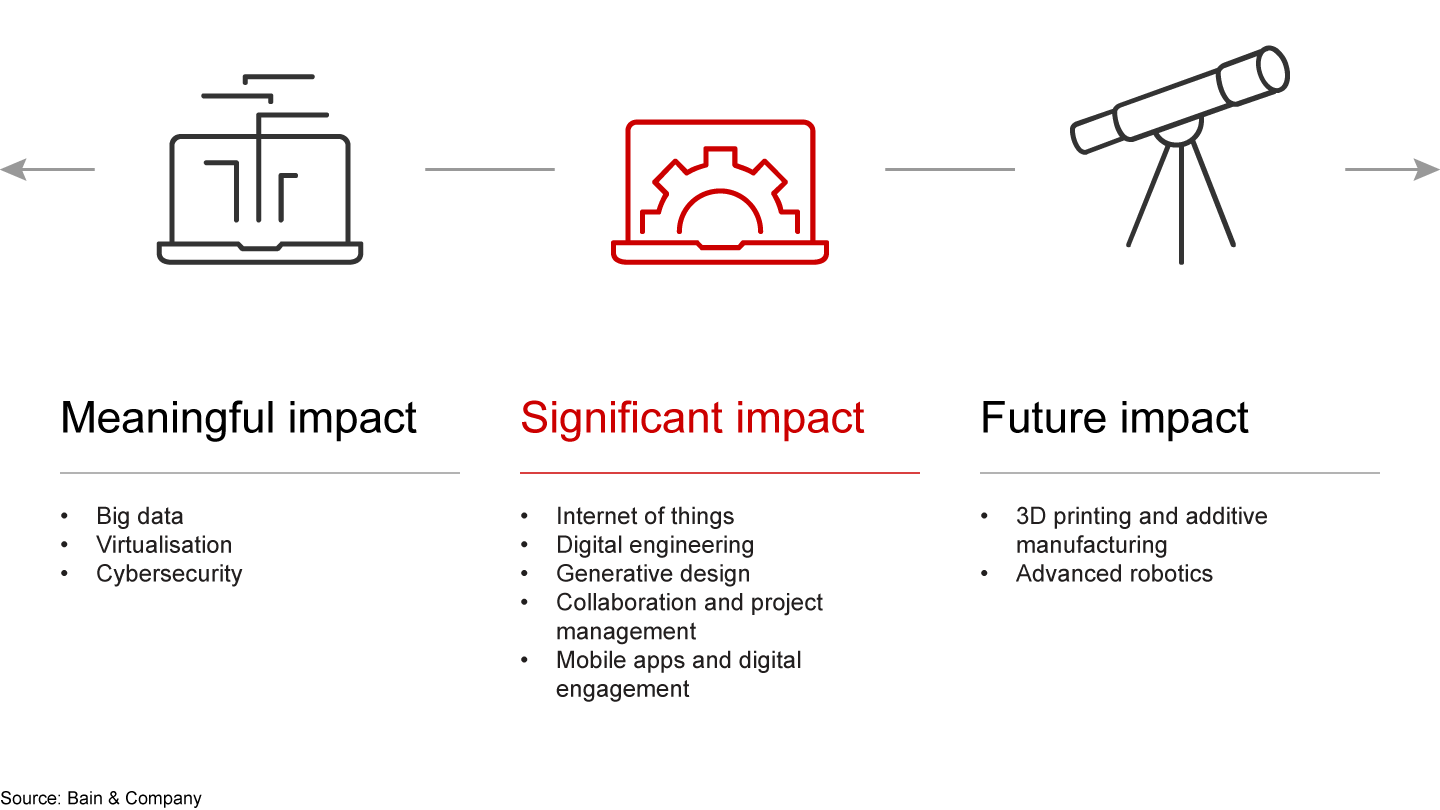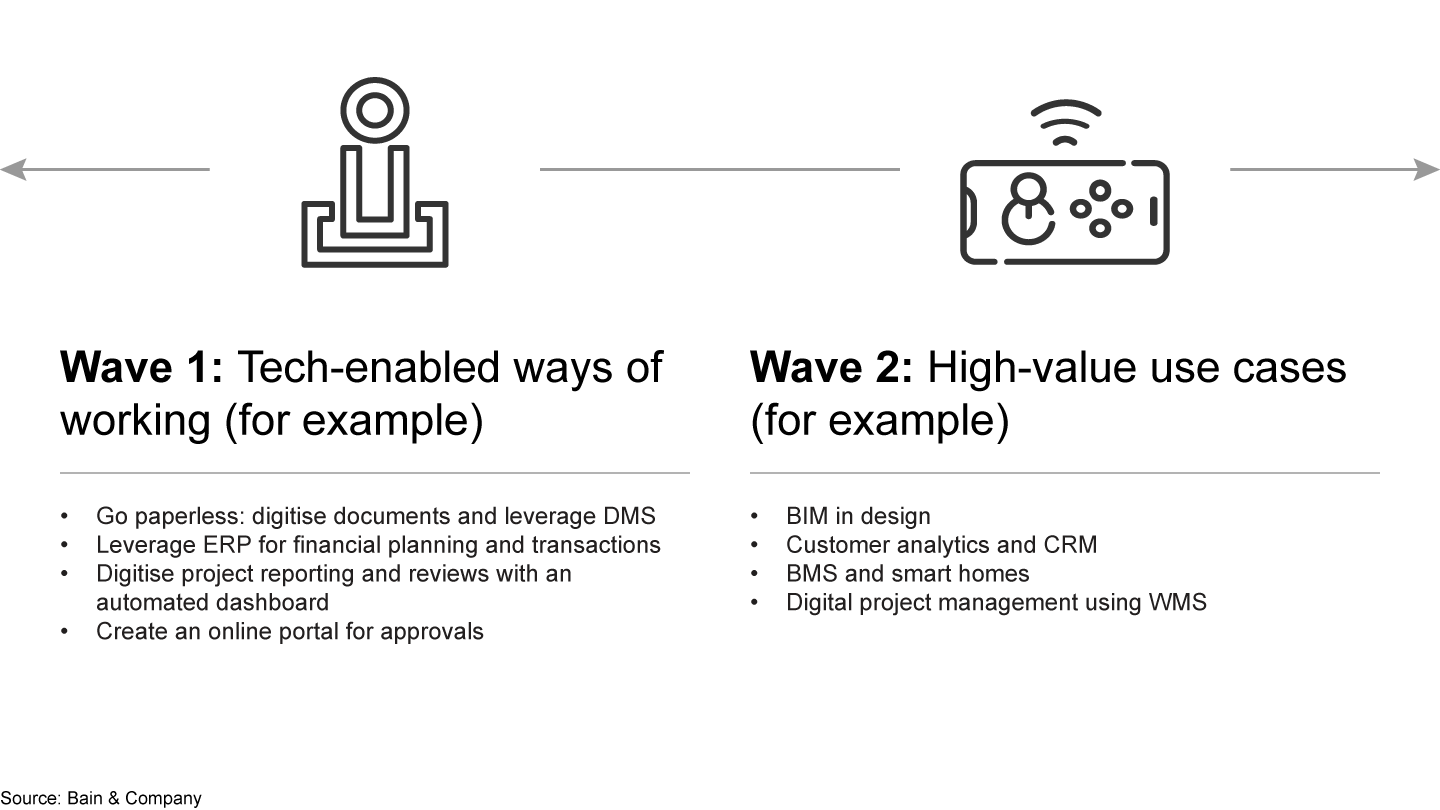Brief

India’s residential real estate market has witnessed a substantial shift in the past few years. It faced significant challenges and uncertainty, including a government-backed overhaul of its regulatory framework and taxation through the Real Estate Regulatory Authority Act (RERA), Goods and Services Tax Act (GST), Demonetisation and Benami Transaction (Prohibition) Act (BTPA).
Covid-19 repressed an already weak consumer sentiment. Demand is likely to be muted until there is economic stability and job security. Operational disruptions, such as labour shortages, suspension of construction activities and disrupted supply chains have adversely affected project delivery and timelines. Developers will face increased constraints in working capital and cash flow. In these challenging times, the priority for developers will be to operate with maximum efficiency and reduce operational costs and leakages, wherever possible.
Additionally, the pandemic will breed a new host of customer key performance indicators (KPIs), namely around building safety and security. Developers that demonstrate thoughtfully redesigned infrastructure upgrades, such as touchless surfaces, digitally enabled entry and exit, resident and guest management systems, smart homes and smart club houses, will attract buyer attention and provide differentiated value. Furthermore, as pipeline customers defer their visits, and traditional lead conversion techniques of walk-ins and in-person showflat tours lose traction, developers who spearhead adoption of digital sales channels including virtual tours and online customer bookings, will find themselves as the leaders of change.
Technology can help developers to enhance efficiency with time, cost and quality across the value chain, especially in designing, planning, budgeting and executing on-site projects. Incumbents who do not embrace change, could lag on the metrics which are critical in deciding future winners. Internet of things (IoT), digital engineering, advanced project management tools, improved connectivity, data proliferation and adoption of smart phones and hand-held devices, are some technologies that will change operating models in the near term. Other current technology, such as 3D printing and robotics, will also have a long-term effect on the industry (see Figure 1).


How a company starts its digital transformation depends heavily on its existing level of technology. As a first step, a company should boost its productivity through digital ways of working like going paperless and implementing advanced enterprise resource planning (ERP) systems, digital reporting, collaboration and approvals. This will build the foundation for making other high impact transformational changes, which could create greater efficiencies, or become a competitive risk, if not adopted (see Figure 2).


Select digital interventions that could have a significant effect on developers
Building information modeling (BIM) uses a standardised machine-readable information model to improve planning, design, construction, operation and maintenance of a facility such as a building or type of infrastructure. The system contains all appropriate information created around that facility in a format that can be used by all stakeholders throughout its lifecycle. BIM functionality has evolved to seven dimensions which include 3D visualisation, scheduling and sequencing tasks (4D), cost estimation of projects (5D), centralised and automated procurement (6D) and improved life cycle management (7D).
BIM software offers several advantages, including ready-made layouts, detailed design drawings, and accurate quantity estimation due to an in-built code to check system errors. It has a positive effect on the complete construction value chain leading to time and cost savings, reduced complexity and a more sustainable development process. However, the adoption of BIM requires a collaborative team culture, clear responsibilities and legal rights for contractors and architects.
A workflow management system (WMS) is a one-stop solution for simplifying collaboration across all stakeholders in the real estate activity chain. Collaboration and information flow in the real estate business is complex due to multiple stakeholders which includes the project manager, design consultant, engineer, architect, vendor, contractor, sub-contractor, client and the government. There are several WMS tools available in the market such as Asite and Aconex, which provide a relatively comprehensive solution across the entire activity chain.
Implementation of WMS offers multiple benefits, including a centralised repository of data and access to documents, review protocols and audit trails. It allows users to assign documents or issues and raise queries to specified stakeholders. WMS features also include electronic checklists, customised dashboards and escalation mechanisms with easy accessibility to all stakeholders across multiple channels (mobile, tablet and personal computer). This creates a digital knowledge base for automating processes such as design recommendations, scheduling templates and best practices on mitigating risks. This can help expedite and enhance the learning curve for the new workforce and improve efficiency by reducing human capability related variances. As the post Covid-19 new normal dictates social distancing, reduced office capacity and continuing work-from-home measures, ensuring quick and seamless digital access to a centralised repository of relevant documents will create operational efficiencies and quicker execution times.
Digitally enabled end-products will allow developers to safely manage the way in which people use space and utilities in their homes and common spaces.
In-home solutions
In-home solutions refer to digitally enabled products within personal apartments. Even as offices begin to resume operations gradually, a large portion of the workforce will continue to operate from home for extended periods of time. The use of in-home space will vary with time of day: workplace by day and bedroom by night. Developers need to offer an innovative answer that optimises the use of apartment space. One such solution is marketed by proptech start-up, Bumblebee Spaces. The company uses robotics and artificial intelligence (AI) to provide smart volumetric solutions such as bed and storage units tucked into the ceiling, a voice and control panel that can be used to retrieve and store these units, an AI system that classifies, catalogues and retrieves items per customer need. This allows for higher space functionality by optimising a three-dimensional space (converting bedroom to home office) and for an improved customer experience via automation of home appliances and smart functions.
Covid-19 will also focus on smart homes. Smart homes deploy IoT hardware to enable hands-free home security, energy management and home entertainment. Application-based solutions that control a wide range of appliances will be the first step towards touchless services. Improved management of household utilities will lower the frequency of repairman visits and dependence on external vendors. Smart wellness includes smart home applications such as fall and activity detection. Smart home start-up, Caspar, has a product that improves awareness. It detects resident activity and sends a notification to the registered care circle if a senior citizen falls or has a fever. Additionally, the built-in AI system encourages residents to adopt a healthier lifestyle and reminds them to take medicines without the use of any wearables. This is a key feature for families, as it tracks the health of senior citizens living across different cities.
Out-of-home solutions
Out-of-home solutions refer to building management systems (BMS) implemented across clubhouses, lobbies and other common areas. In a post Covid-19 setting, monitoring the use of common spaces and the flow of residents and guests are a priority. Smart BMS solutions will become central for ensuring the safety and security of others. This involves implementing and tracking a host of digital measures integrated into a single user-friendly solution:
- Smart entry/exit: This involves enabling touchless doors and elevators, and maintaining a digital footprint of all guest visits to the building along with digital records of temperature checks.
- Smart clubhouse: As clubhouses operate at a limited capacity, buildings will need a platform to intelligently manage slot bookings, control overcrowding, schedule daily down-time for sanitation and cleaning, and implement smart access controls to reduce physical touch in common areas to zero.
- Smart delivery: With a rise in e-commerce adoption, buildings have currently developed ad-hoc solutions to manage grocery and other essential deliveries. As non-essential deliveries restart and the volume of goods increases, there will be a need to effectively manage logistics, sanitise products, ensure touchless pick-up and safely discard packaging.
Successful at-scale implementation will require developers to identify the right set of features by project type and partner with players across the smart home spectrum.
In these pressing times, it is imperative that real estate companies make investments in digital adoption to stay ahead. To advance digital transformation, companies must define the ”what” as a prioritised and sequenced list of digital initiatives based on long-term ambitions, market dynamics and a business model with a complementing digital roadmap. It is also important to define the ”how” in terms of the operating model or organisation structure, capabilities needed and investments required for the transformation. Despite the benefits, digital transformation can also create complexities if not undertaken systematically. Agreement across multiple levels, careful prioritization to manage investments and a sound digital operating model is critical to mitigate the risks.
The current environment has created a number of business, logistical and social challenges that can be considered a catalyst for change for real estate companies. The industry and developers must begin to accelerate their digital transformation journey to improve process efficiencies, redefine the end-product and retool with an upgraded operating model for a new future.